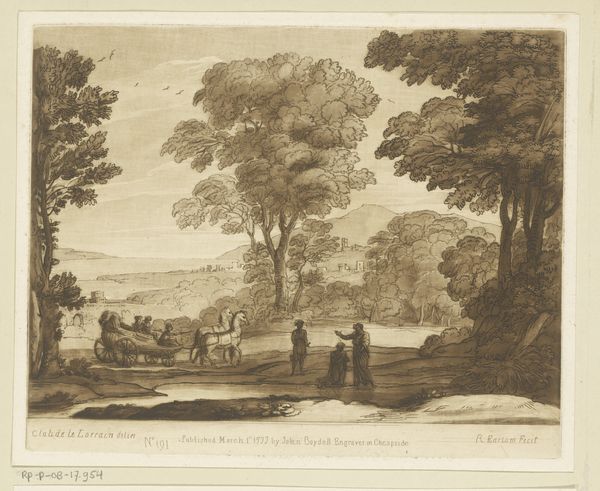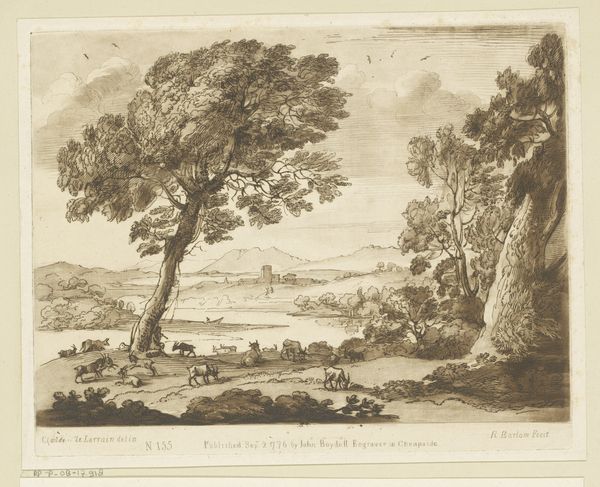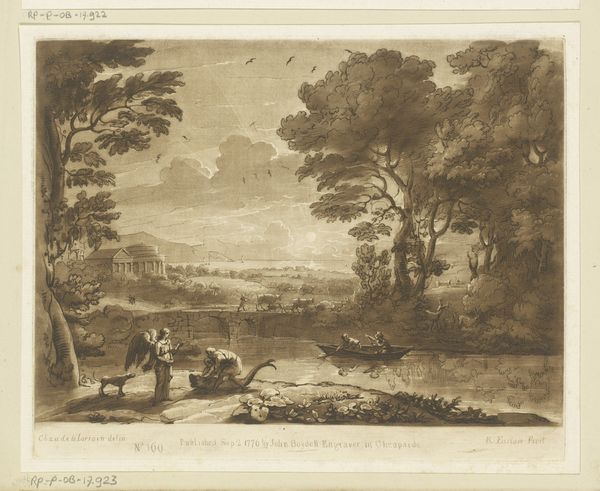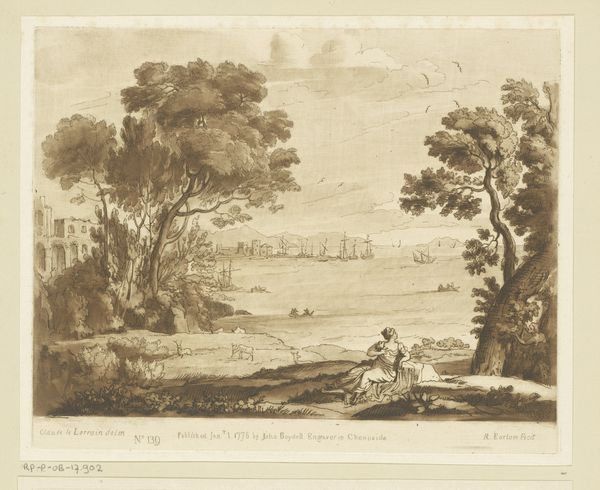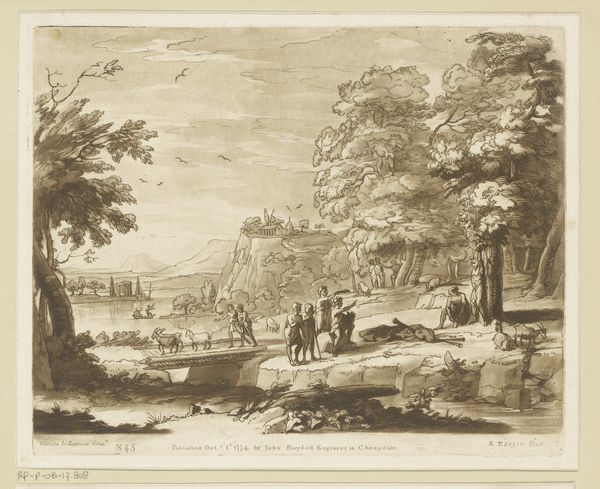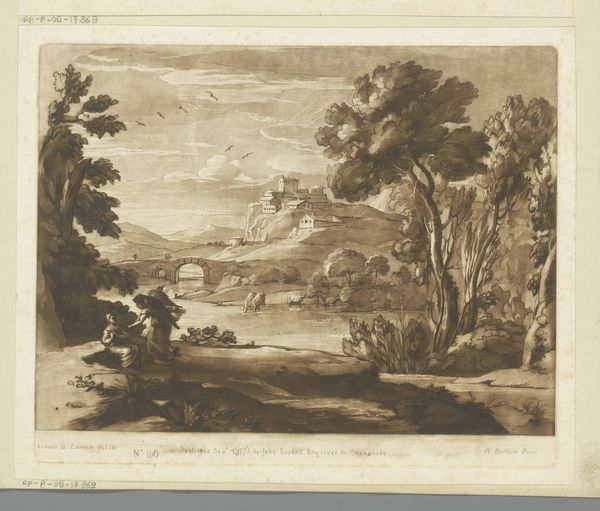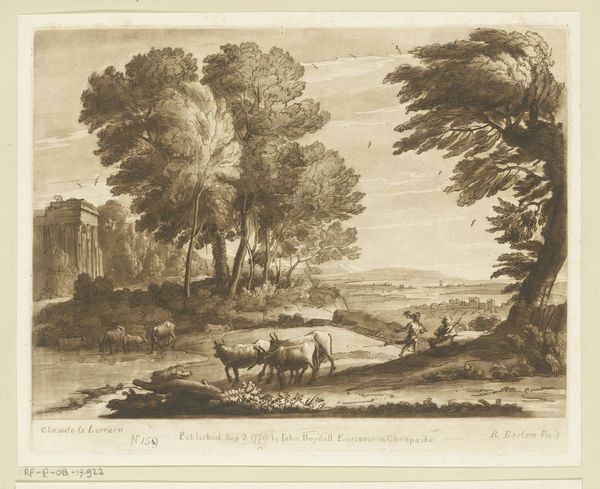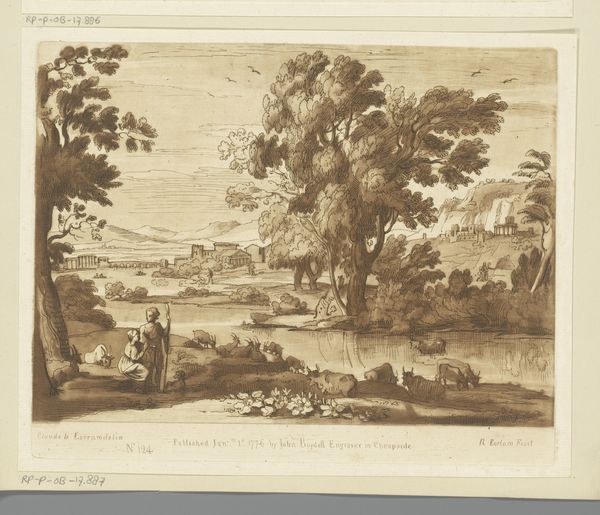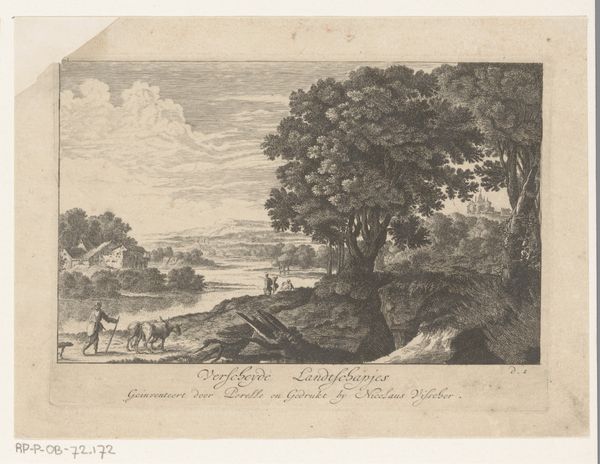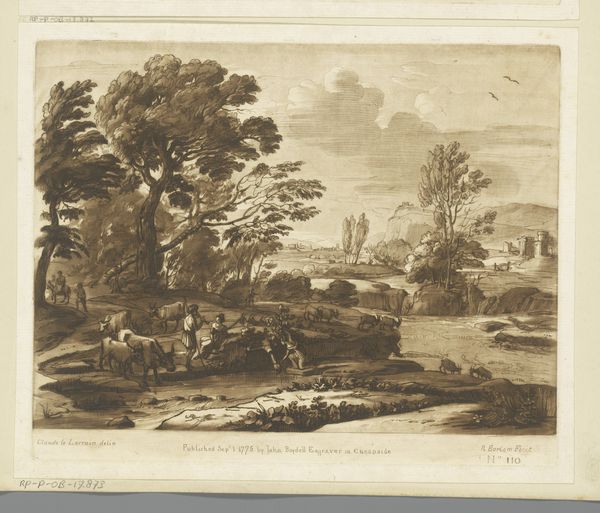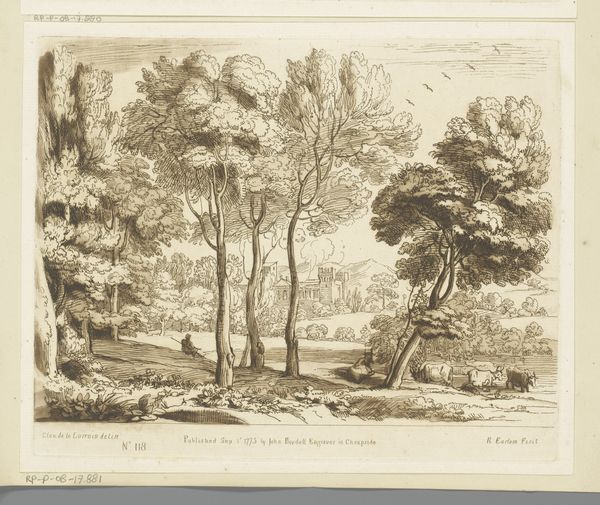
Dimensions: height 206 mm, width 258 mm
Copyright: Rijks Museum: Open Domain
Curator: This engraving, "Coastal Landscape with the Embarkation of Carlo and Ubaldo," possibly dating to 1776, is by Richard Earlom and comes to us from the Rijksmuseum collection. There's a muted tone to the sepia print of two men, apparently in classical garb, as they come to embark upon their sea voyage in a small craft with an awaiting sailor. Editor: Instantly, a serene and contemplative mood washes over me. The landscape seems to be holding its breath, waiting for their adventure to begin. Curator: I see you are captivated, as I am. Let's consider that these figures, Carlo and Ubaldo, aren't just anyone; they are characters drawn from Torquato Tasso's epic poem, *Gerusalemme Liberata*. That title translates to *Jerusalem Delivered* in English, published in 1581, about the apocryphal clash between Christians and Muslims for control of Jerusalem in the final year of the First Crusade. Editor: Fascinating. The figures are clearly important symbols. Is it a Romantic vision, though, or more rooted in allegory? The choice of this scene to print suggests a deliberate decision to invoke themes of loyalty, duty, and perhaps even sacrifice in service to a higher cause or earthly king. Curator: Earlom wasn’t illustrating Tasso directly; he was, in effect, creating an engraving after a drawing by Claude Lorrain. Earlom's contribution here wasn't invention, but interpretation through line and tone—a fascinating act of translation across media. It exemplifies the 18th-century taste for the picturesque, mediated through a lens of classical heroism and perhaps melancholy at its slow fading. Editor: Ah, the melancholy is strong. What Earlom communicates with his skillful shading suggests both movement and timelessness. This print’s enduring resonance lies in its blend of classical grandeur with the intimacy of human emotion, made potent with its invocation of that melancholy that, I suppose, we feel across time. Curator: The Romantic elements are all very powerful, I agree. And there's something rather tender about Earlom's process. Editor: Indeed. An allegorical quest on the verge of initiation, suspended and quieted within the human heart, seems a compelling way to think of this artwork in both Earlom's time and our own.
Comments
No comments
Be the first to comment and join the conversation on the ultimate creative platform.
